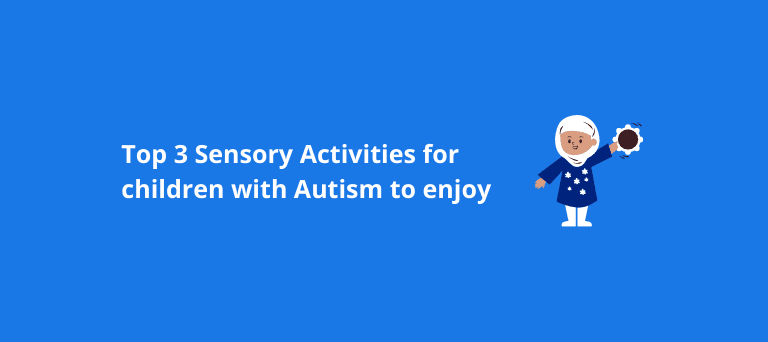Olivia Sheppard
1 Apr 2020
5
min read

Written by Zen Educate’s Olivia Sheppard, an SEN Support Worker of four years to children and young adults with Autism, PMLD, Complex Medical Needs and SEMH.
In honour of World Autism Awareness Week, I have put together a list of my favourite sensory activities for supporting children with additional needs. I hope you find them useful in your next SEN role!
Engaging children with autism in sensory activities is beneficial in several ways as it can help with:
Stimulating the brain, creating neural pathways and improving sensory processing systems
Improving social skills such as communication (verbal and non-verbal) and cooperation
Improving fine/gross motor skills and coordination
Calming children down when they are agitated or distressed
Try a range of activities to stimulate all of the five senses – touch, smell, taste, sight and hearing. Start off gently and evaluate what works well, and what should be avoided if there are any activities that trigger distress. Sensory activities are beneficial for all children, not just those with a diagnosis of Autism - so get the whole family involved with these great activities!
1) Make a Sensory Bottle
Have your child choose the receptacle - it could be an old plastic drinks bottle, a Voss bottle, an old spice jar - anything with a very sealable, screw on lid! Make sure the bottle of choice is clean and see-through. Now they can choose the liquid. Good recommendations are:
Water - feel free to add food dye and have your child choose the colour.
Mineral or Baby oil - this will slow down whatever's inside your bottle!
Vegetable oil - great for mixing with coloured water
Liquid soap
Glitter Glue
Time to choose the ‘dry’ ingredients - which can be anything! Glitter, magnets, small plastic toys, beads, confetti, legos to name just a few. Once your bottle is full, use a glue gun or gorilla glue to seal the lid on top of the bottle.
Make sure your child is involved in every choice along the journey of building your sensory bottle and describe to them in detail the colours, textures, and scents that you’re using. Where possible, prompt your child to say or sign the colour/item they want to choose to promote communication and cooperation.
2) Painting and Art Therapy
Painting is a simple activity that is fun for the whole family to get involved with! Many children with Autism have an extraordinary ability to think visually “in pictures” and can turn this ability into gorgeous works of art, which is a form of expression requiring little/no verbal communication. It also helps them express emotions through colour and movement.
Of course you can use the old school paint brushes but there are so many other household objects that can be used to create amazing, unique art works! Here are just a few ideas:
Materials - bubble wrap, sandpaper, cardboard, sponge
Vegetables - potatoes, carrots, broccoli - carve shapes out on the bottom or use them whole.
Body parts - fingers/toes, feet, hands
Toys - use parts of toys to print shapes
This is also a great opportunity to teach colours and promote social skills if painting as a family. Prompt verbal communication and organic asking for items where you can, but most of all, just have fun!
3) Scented Playdough
Playdough is a firm favourite amongst all children, and has been shown to be particularly beneficial for children with a wide range of additional needs, including Autism. It is a fantastic stress reliever! By kneading, rolling, flattening and moulding the dough, children can release feelings of stress and anxiety, which could lead to a reduction in challenging behaviour. By adding aromatherapy oils (such as vanilla, lavender or rose, see recipe below), you can make the dough therapeutic and calming.
Playdough boosts hand strength as well as dexterity and coordination. It may take a while to make an impact but the muscles in the hand and forearms will be strengthened by the dough.
Finally, it can be a great learning aid, from teaching numbers to colours. When using the dough, explain what you are doing and why and then get your child to imitate your actions.
So how do you make playdough?
250ml water
1 tbsp oil (vegetable, coconut or olive)
64g salt
T tbsp cream of tartar
64g plain flour
Food colouring/Aromatherapy oil/Spices (paprika, cocoa powder, turmeric)
Mix the water, oil, salt and cream of tartar, add the food colouring if using, and heat mixture in a saucepan until warm. For play dough with a more exciting look, adding glitter can also be an option worth considering.
Remove from the heat and add the flour.
Stir the mixture until it forms a ball, add aromatherapy oil or spices if using, and then knead until smooth.
Place in an airtight container when not in use.
We’d love to see any pictures you’d like to share from carrying out these activities. You can post them and tag us @ZenEducate or send them to support@zeneducate.com. Thank you!



